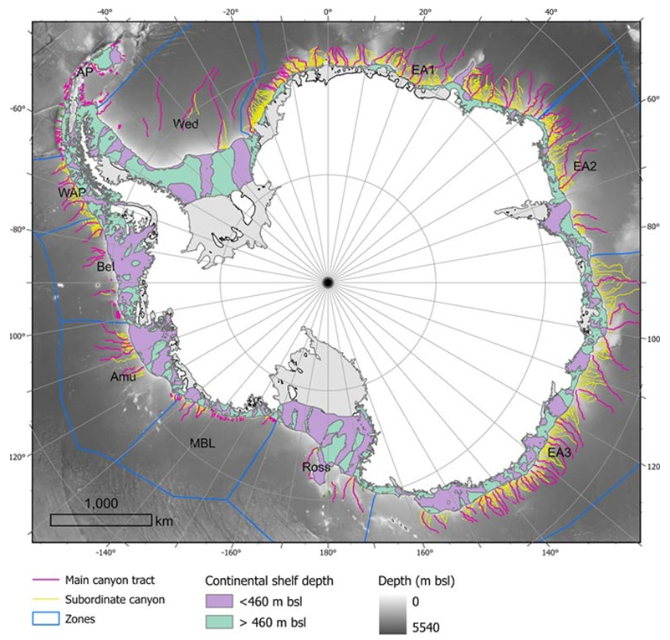Our Terms & Conditions | Our Privacy Policy
What lies beneath Antarctica? Scientists discover the hidden world of Submarine valleys under the frozen lands
Representative (Photo : Canva) The icy blanket of Antarctica is a mysterious terrain, as most of its lands remain still unexplored largely because of its thick blankets of ice with many hidden secrets beneath it. These places might sound remote and mysterious, but they play a quiet, powerful role in our planet’s health.As oceans warm and frozen ice shelves melt, these underwater pathways could have an outsized influence on weather patterns, sea levels, and even the stability of massive ice sheets. And by using advances in mapping technology, researchers can now see deeper and more clearly than ever before, looking out to the once unimaginable landscapes.
What new discoveries does the study tell?
A study published in the journal Marine Geology, has revealed that Antarctica’s ocean floor is far more dramatic than we ever realized. Scientists have found out a massive network of 332 submarine canyon networks, that’s five times more than previously known. The study is based on new high-resolution bathymetric maps from the International Bathymetric Chart of the Southern Ocean (IBCSO v2), giving a completely unexpected look at these hidden valleys.
What are submarine valleys?
Submarine valleys, also known as submarine canyons, are deep, steep-sided valleys carved into the ocean floor, often found near continental shelves. They’re formed by underwater currents, glaciers, and sediment flows. These hidden canyons help transport nutrients, support marine life, and play a key role in ocean circulation and climate systems. These are not shallow ditches; they can go as deep as 4,000 meters. David Amblàs, a researcher from the University of Barcelona, explained to ScienDaily, “Some of the submarine canyons we analyzed reach depths of over 4,000 meters.”He described the most interesting systems of East Antarctica, which are complex and ever-dynamic and growing. These systems usually begin with multiple heads near the continental shelf and merge into a single deep channel that drops sharply down the slope.In contrast, West Antarctica’s canyons are shorter and steeper, with V-shaped cross-sections, while the East’s are broader and U-shaped, suggesting a longer and more intense history of glacial sculpting.
These are not shallow ditches; they can go as deep as 4,000 meters. David Amblàs, a researcher from the University of Barcelona, explained to ScienDaily, “Some of the submarine canyons we analyzed reach depths of over 4,000 meters.”He described the most interesting systems of East Antarctica, which are complex and ever-dynamic and growing. These systems usually begin with multiple heads near the continental shelf and merge into a single deep channel that drops sharply down the slope.In contrast, West Antarctica’s canyons are shorter and steeper, with V-shaped cross-sections, while the East’s are broader and U-shaped, suggesting a longer and more intense history of glacial sculpting.
Photo: Marine Geology
Why are these channels important?
These hidden formations are far from inactive. They influence how sediment, nutrients, and water move between the coast and the deep ocean, creating rich habitats and impacting the global ocean currents. Crucially, they help to channel warm water toward ice shelves, resulting in their melting, and guide cold water back into the deep ocean, impacting climate systems like the formation of Antarctic Bottom Water.According to Earth.com, currently, only about 27% of the Earth’s seafloor has been mapped in high resolution, meaning that the true number of submarine canyons, especially hidden in remote regions, could be tens of thousands more.
Images are for reference only.Images and contents gathered automatic from google or 3rd party sources.All rights on the images and contents are with their legal original owners.



Comments are closed.